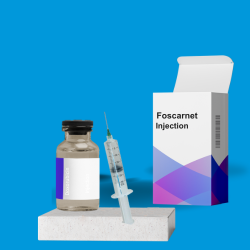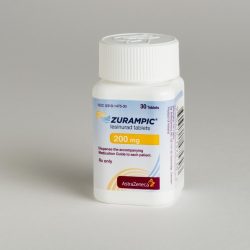Description
Uses of Medicine:
Foscarnet 24 mg/mL injection is an antiviral therapeutic drug. It prevents certain viruses from multiplying in the body. Patients, Healthcare Professionals (HCP), or Hospitals can buy Foscarnet 24 mg/mL Injections online from India through THE INDIAN PHARMA (a trusted Foscarnet Supplier, Exporter, and Contract Manufacturer in India) for the treatment of:-
- CMV retinitis in patients with acquired immunodeficiency syndrome (AIDS).
- Acyclovir-resistant mucocutaneous HSV infections in immunocompromised patients.
Foscarnet 24 mg/mL injection is a prescription medicine. It is widely used for the treatment of serious viral infections, particularly in individuals with weakened immune systems, such as those living with AIDS.
Foscarnet is mainly used to treat a virus known as cytomegalovirus (CMV). CMV can cause a very serious eye infection called CMV retinitis, which may cause vision complications or even blindness. The medicine is especially useful for individuals who cannot take another common CMV medicine called ganciclovir, either because they have side effects from it or because it is no longer effective for them. In such scenarios, Foscarnet 24 mg/mL injection works as a backup treatment, often known as salvage therapy.
This therapeutic drug is also used for the treatment of herpes simplex virus (HSV) infections. It is especially used in those whose immune systems are weak. HSV usually causes cold sores or genital sores. Most individuals respond well to a medicine known as acyclovir, which is considered the standard treatment. But sometimes, the virus becomes resistant to acyclovir, which means the medicine no longer works. In these scenarios, Foscarnet injection can be used as an alternative treatment.
The medicine is usually administered through an IV (intravenous infusion), which means it goes directly into a vein. Because it’s a strong therapeutic drug, it is typically used in a hospital or under close medical supervision.
In summary, Foscarnet 24 mg/mL injection is an important antiviral medicine used when other treatments don’t work or can’t be considered. This treatment helps manage life-threatening infections caused by CMV and HSV in individuals with weakened immune systems and plays an important role in preventing further complications from these viral diseases.
Dosage & Side Effects:
CMV Retinitis (Induction Therapy): The recommended dosage of Foscarnet for induction therapy is 60 mg/kg every 8 hours or 90 mg/kg every 12 hours, administered as an intravenous (IV) infusion over 2 hours for 14 to 21 days. Maintenance Therapy (CMV Retinitis): After the induction phase, patients typically continue with maintenance therapy at a dose of 90 to 120 mg/kg once daily, administered as an IV infusion over 2 hours to prevent disease progression. Acyclovir-Resistant HSV Infections: The recommended dosage for acyclovir-resistant mucocutaneous HSV infections is 40 mg/kg IV every 8 hours over at least 1 hour, typically continued for 2 to 3 weeks or until clinical resolution is observed.Staying well-hydrated before and during Foscarnet treatment is important; doing so lowers the chance of kidney damage. Generally, a quick drip of 750 to 1000 mL of normal saline or dextrose-saline is given just before the drug starts.
Because Foscarnet is hard on the kidneys, doses must be cut in patients with poor kidney function, and doctors should check serum creatinine regularly. Because the drug has a narrow safety margin and can cause serious side effects, it should only be given by healthcare providers who specialize in antiviral therapy.
The most common side effects of Foscarnet injection are fever, flu-like symptoms, nausea, vomiting, diarrhea, chest pain, back pain, or headache.




